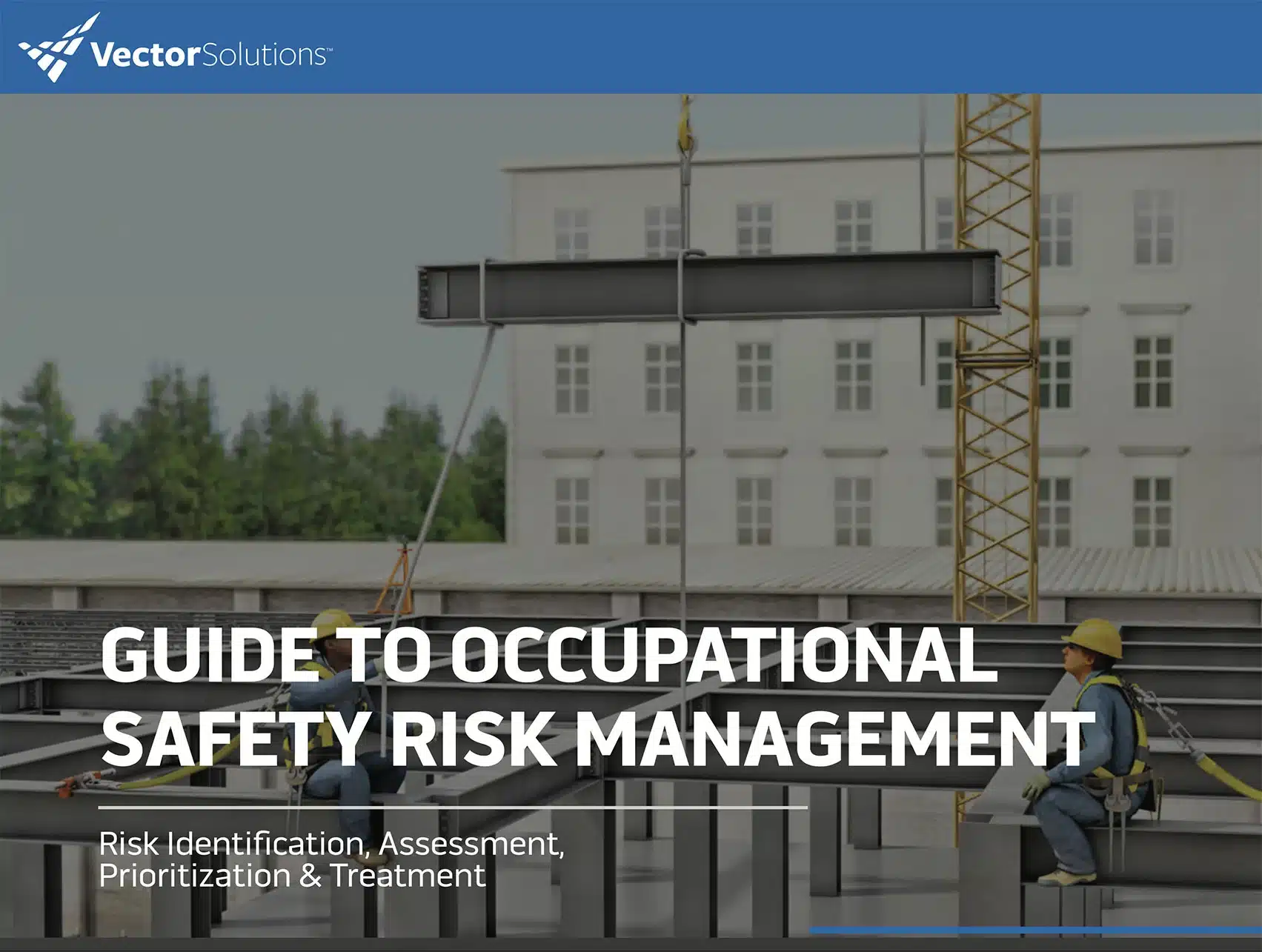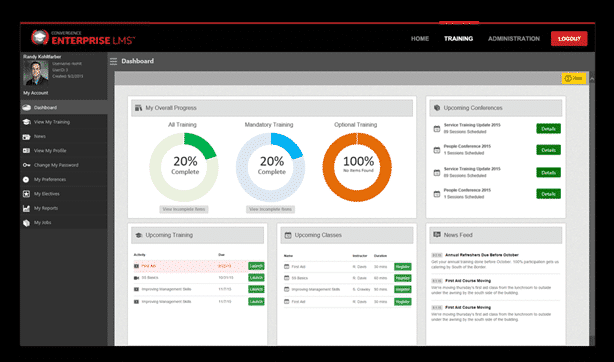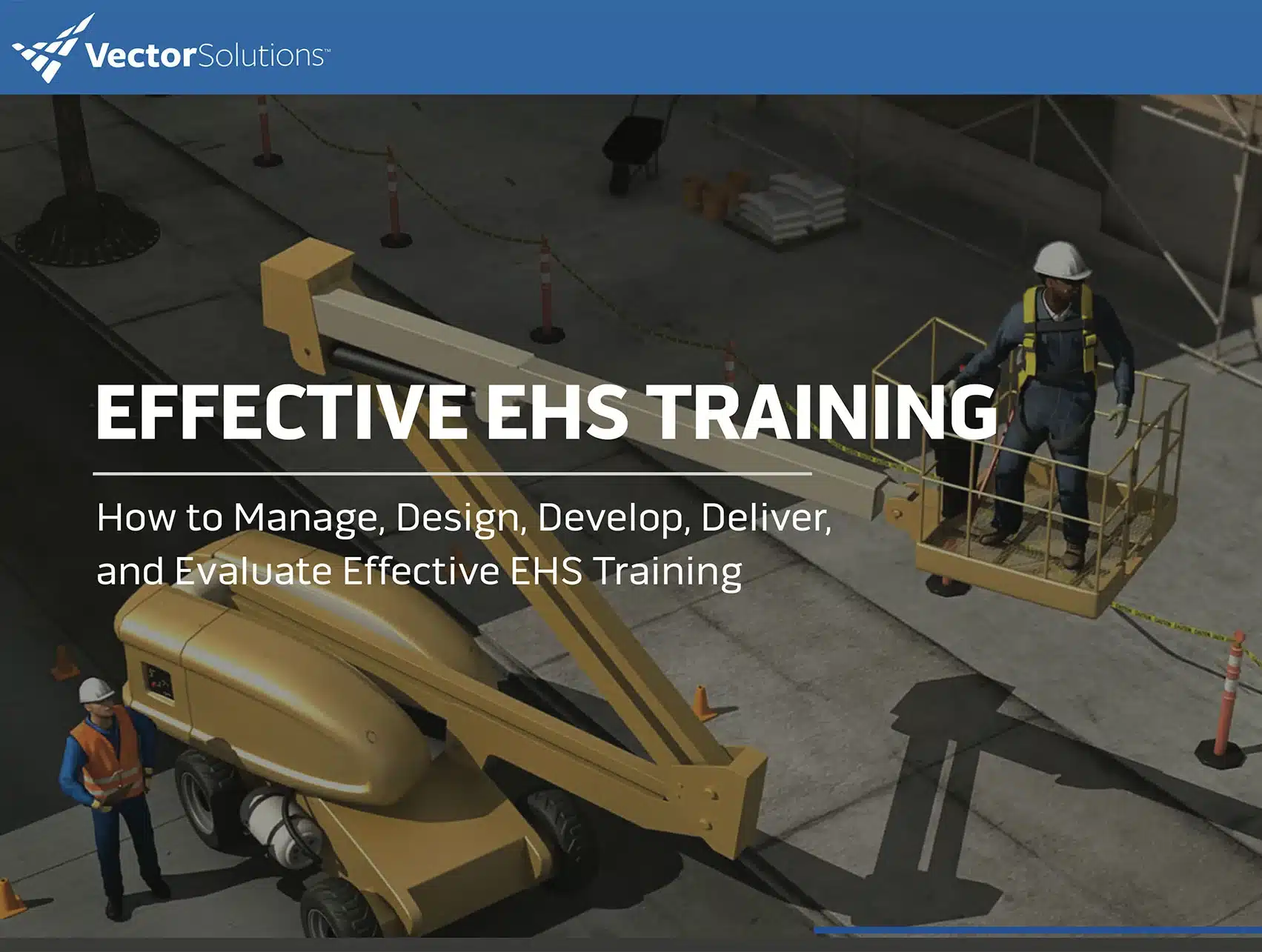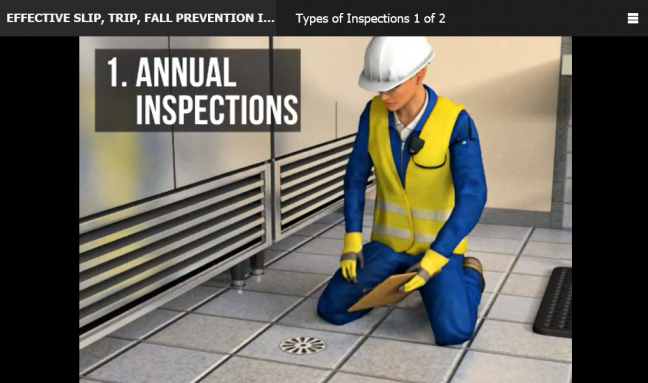February 2, 2017 13 min read
What is EHS and Why is it Important?
Industry:
Solution:
EHS stands for Environment, Health, and Safety. It’s a general term used to refer to laws, rules, regulations, professions, programs, and workplace efforts to protect the health and safety of employees and the public as well as the environment from hazards associated with the workplace. You can also think of it as what makes up the profession of occupational safety and health professionals (plus their good friends in the Environmental department).
Although EHS is a common way to abbreviate this, you’ll also see HSE or other versions. And sometimes you’ll see the addition of a “Q” for Quality, as in EHSQ.
We’ll learn a little more about EHS in this article, including who’s responsible for it and some tools used in the field.

Vector EHS Management Software empowers organizations – from global leaders to local businesses – to improve workplace safety and comply with environmental, health, and safety regulations.
Learn more about how our software can save you valuable time and effort in recording, tracking, and analyzing your EHS activities.
Learn more about how we can help:
- Incident Management Software →
- EHS Inspection Software →
- Key Safety Metrics Dashboard →
- Learning Management System (LMS) and Online Training Courses →
- Mobile Risk Communication Platform
Download our EHS Management Software Buyer’s Guide.
What Are the E, H, and S in EHS?
Let’s start by looking at those three letters E, H, and S and determining what they mean.
E stands for Environment. We’re talking about things like environmental releases and spills here.
H stands for Health. We’re talking about things that can make you ill here, like airborne particulates, biological pathogens, and radiation, and/or things that can harm you as a result of exposure, such as noise.
And S stands for Safety. We’re talking about things that can cause injuries here, such as getting caught in a moving machine or being run over by a forklift.
Why Is EHS Important?
The primary benefit of EHS, and workplace EHS programs, is the obvious one: preventing incidents such as injuries, illnesses, and harmful environmental releases.
One of the classic (and most horrible) historic examples of a workplace incident that showed the need for EHS efforts was the Triangle Shirtwaist Fire. Other well known and more recent examples include the Bhopal/Union Carbide explosion in 1984, the Upper Big Branch Mine-South explosion of 2010, the BP Deepwater Horizon oil spill of 2010, and the fire in, and ultimate collapse of, the Savar building in Bangladesh in 2013. You can probably think of other horrible workplace incidents yourself.
Because these hazards are real, EHS programs are necessary and provide real benefits. For example, this OSHA website on safety and health management programs provides a lot of case studies demonstrating these benefits.
In addition, EHS programs at work also show employees that companies care about their well-being. If you have an active EHS culture, your company may have fewer incidents. This will make your employees feel safer and more valued. And this will have a positive effect on employee morale, retention, productivity, and even hiring.
And consider this thought along those same lines. A recent study by the American Psychological Association showed that millennials rank safety as an issue of workplace stress higher than any other issue (and higher than earlier generations have). Makes sense for a generation that was raised in the shadows of 9-11, the Great Recession, school shootings, and Hurricane Katrina, right? And since more and more millennials are entering the workforce, this is going to become increasingly important.
And that’s just one way that EHS programs can provide a dramatic positive effect to your company’s bottom line. For example, this study shows a direct correlation between safety and health programs and a company’s stock performance. And this Safety Pays website from OSHA provides an online calculator you can use to estimate the cost of health and safety incidents at your own workplace. Give it a shot, it’s pretty cool.
Also, EHS programs increase customer loyalty. Many consumers today research these issues before deciding which companies will get their money. Why not tap into this EHS-friendly revenue stream, all for doing the right thing?
Risk Management Guide for Safety
Learn to use risk-management approaches for safety and health management.
Download Now
What Does an EHS Manager Do?
An EHS manager works at a company to identify, remove, reduce, and otherwise control hazards and risks.
As the Institute for Safety and Health Management puts it:
“An Environmental Health and Safety manager looks over the development and implementation of all the health and safety programs in the company. They are very much responsible for all employees’ safety at work and the use of proper safeguards. EHS managers also take the reins when it comes to the company’s compliance with all environmental standards and regulations.”
The responsibilities of an EHS manager are many, and may include:
- Running the safety and health management program
- Performing industrial hygiene activities or working with industrial hygienists
- Performing job hazard analyses
- Performing incident investigations
- Helping run safety committees
- Ensuring that environmental, health, and safety training is delivered
- Ensuring EHS regulatory compliance
- Performing worksite walkthroughs and safety observations
- Implementing controls for identified hazards, often by using the hierarchy of controls
- Performing risk management duties
- Gathering and analyzing EHS leading and lagging indicators
- Helping to improve human and operational performance
- And much more
Although we’re talking about an EHS manager above, it’s not uncommon for people to divide these responsibilities. For example, one person may have a primary responsibility for safety and health, and another may have a primary responsibility for environmental issues.
There are other professionals who may play a role, too, such as an industrial hygienist.
What Is an Occupational EHS Program?
Organizations try to manage risks related to EHS hazards through EHS programs at the workplace. These programs attempt to identify, assess, and control hazards at work as well as train workers about the hazards and how to work in a safe and health manner, protecting their safety and health, the safety and health of others in the workplace, and the safety, health, and environmental conditions in their larger community.
Safety management programs, such as ANSI Z10 or those run according to the safety management best practices from OSHA, provide a formulaic and often systematic way to do this. And don’t forget that globally we now have the ISO 45001 Global Standard for Occupational Health and Safety Management Systems.
What Is EHS Software?

There are a large number of software applications that can be used as part of a company’s EHS management program. These can include software applications that:
- Help to manage the health and safety management program
- Manage safety data sheets (SDSs)
- Manage confined space entry permits, hot work permits, and similar written permits programs
- Manage incident investigations
- Manage spill responses
- Manage emissions tracking
- Manage EHS training
- And much more
The video below is an overview of our Vector EHS Safety Management software. Give it a listen if you’d like to learn even more.
The video below gives an overview of one type of EHS software–a learning management system, also known as an LMS, for safety training administration.
Learning management systems are increasingly common for safety training purposes because they increase efficiency, reduce costs, save time, and improve learning results.
Most of these EHS software applications also now have compatible mobile apps that make it easier to use them in the field and/or when it’s most convenient for you–even at home.
Question: What Aspects of EHS Are You Most Interested In?
We hope this introduction gave you a better idea of what EHS is, why it’s important, who plays a role, what some of the techniques are, and more. What part of EHS do you work most closely in? Or what would you like to learn more about?
Leave us a comment here and let us know what you do and what’s on your mind.
And please DOWNLOAD THE FREE GUIDE TO SAFETY TRAINING, below.
EHS Training Guide
Improve your EHS training now with tips from an ANSI/ASSP Z490 creator.
Yes! I Want this Guide!










